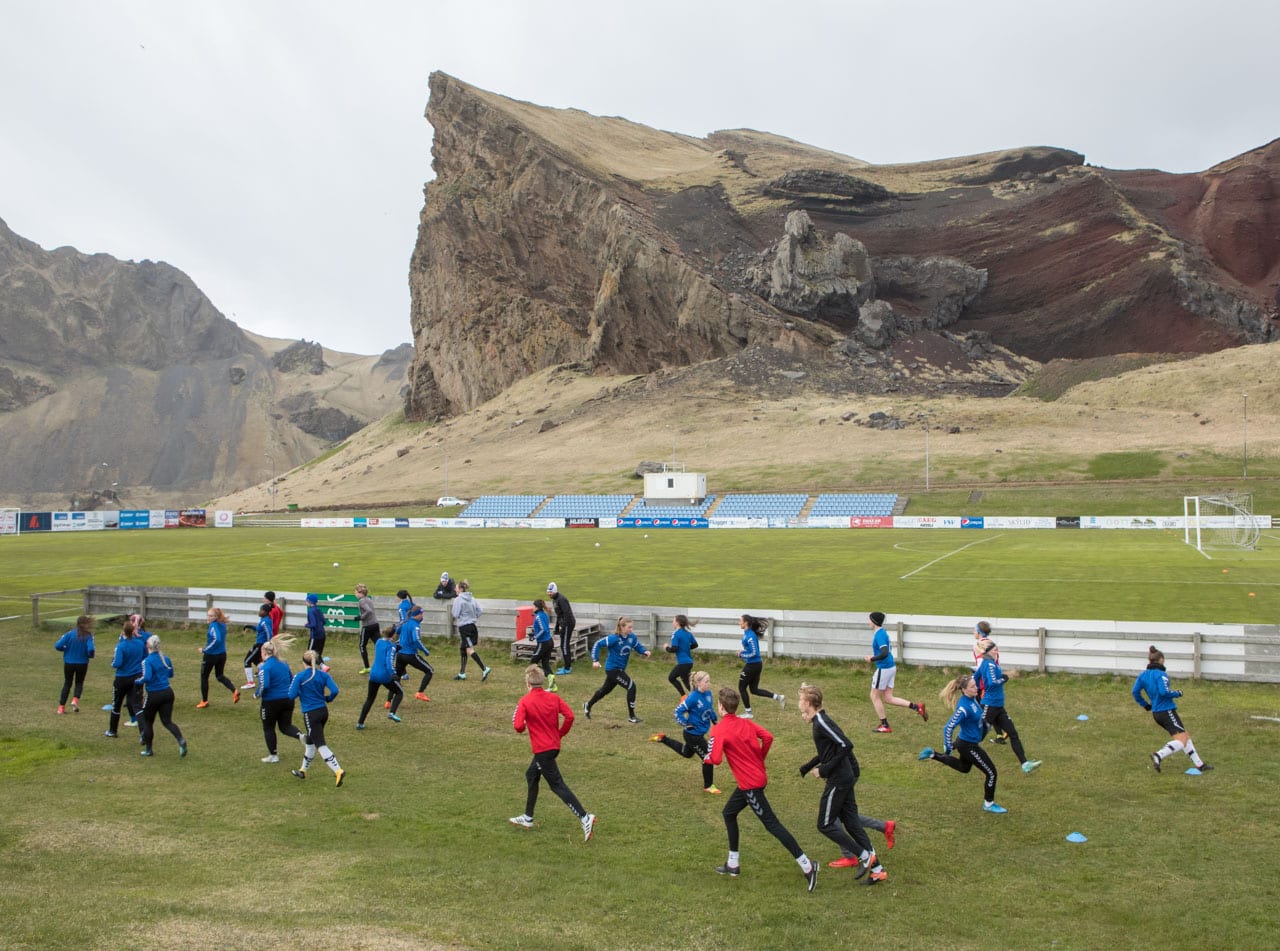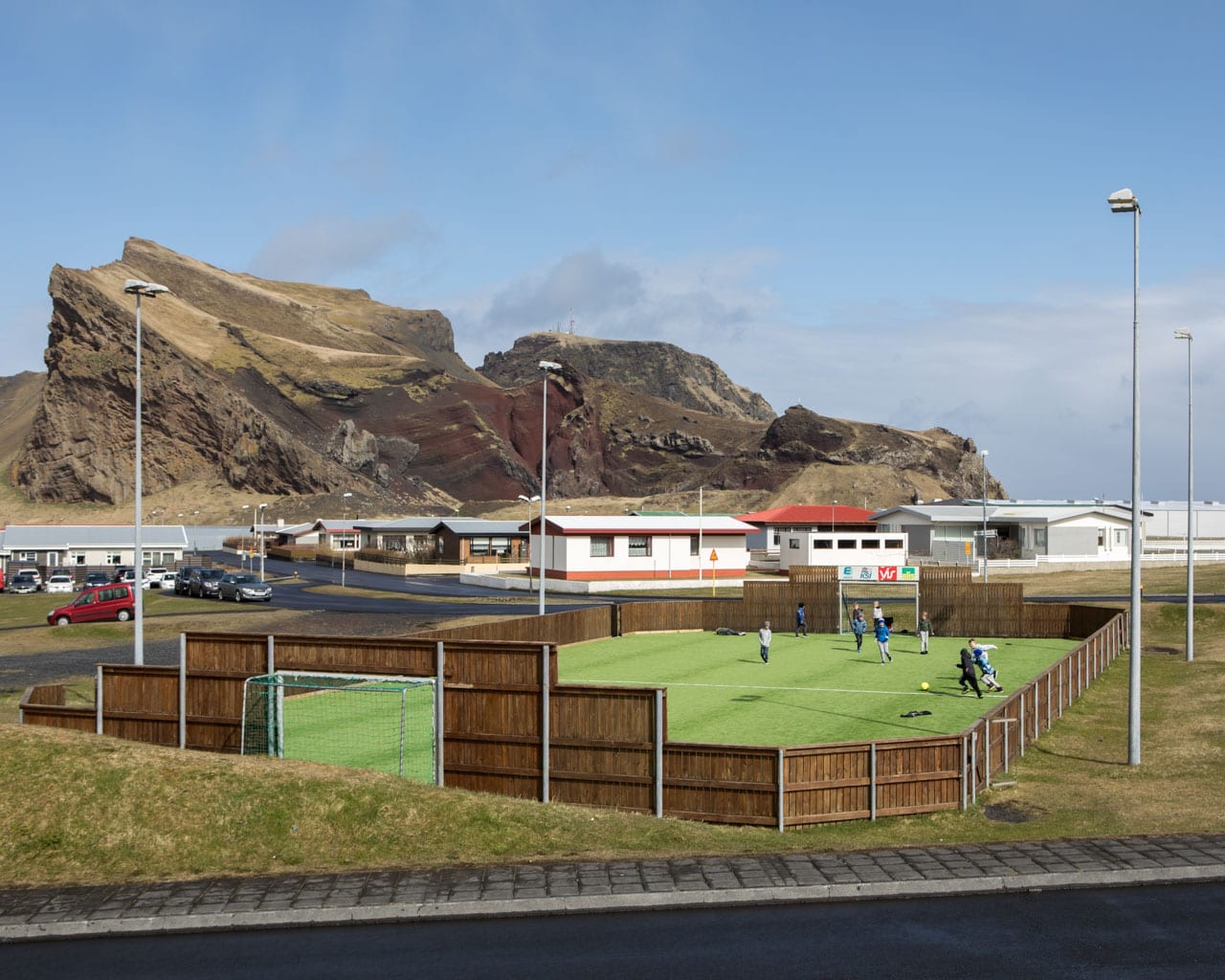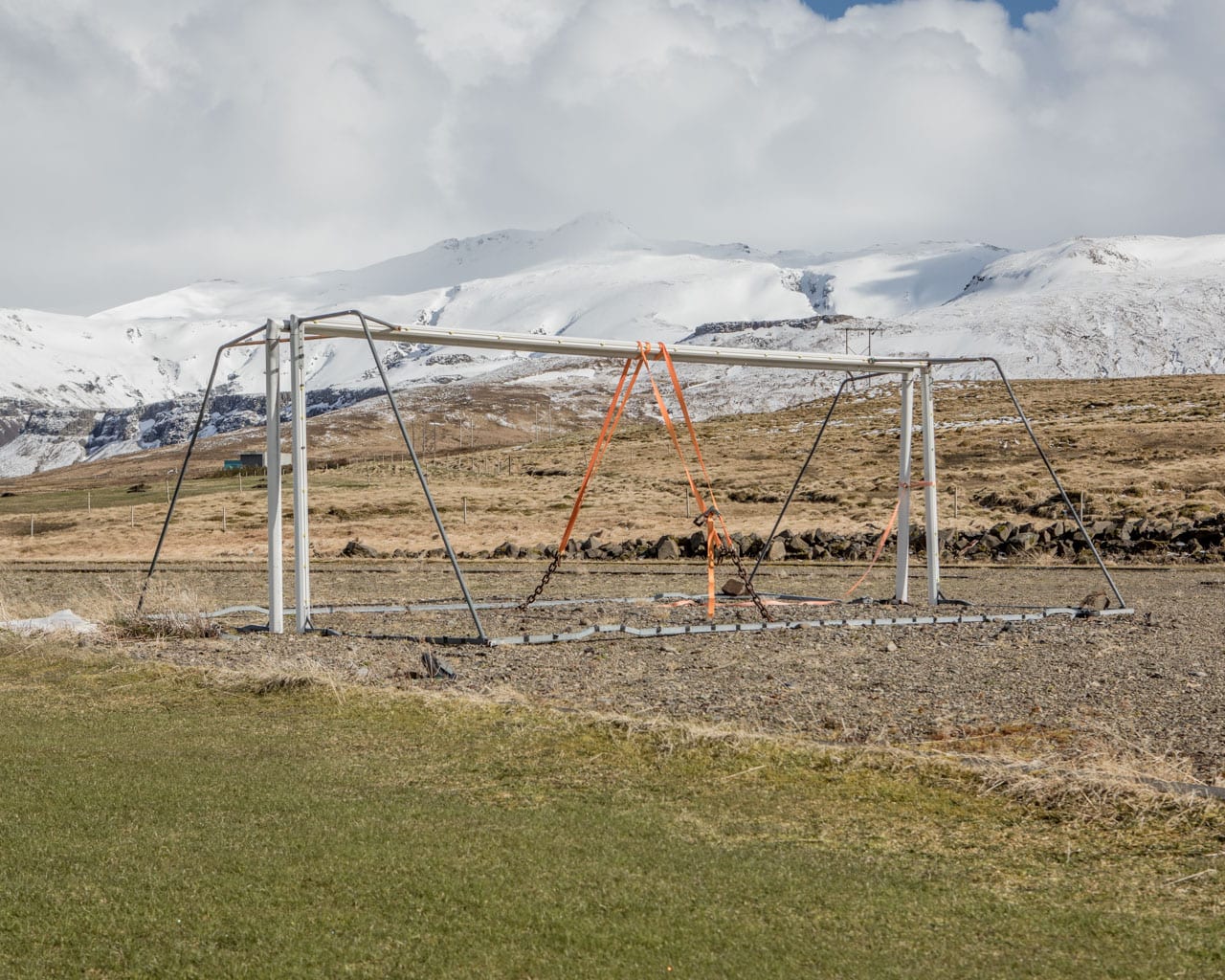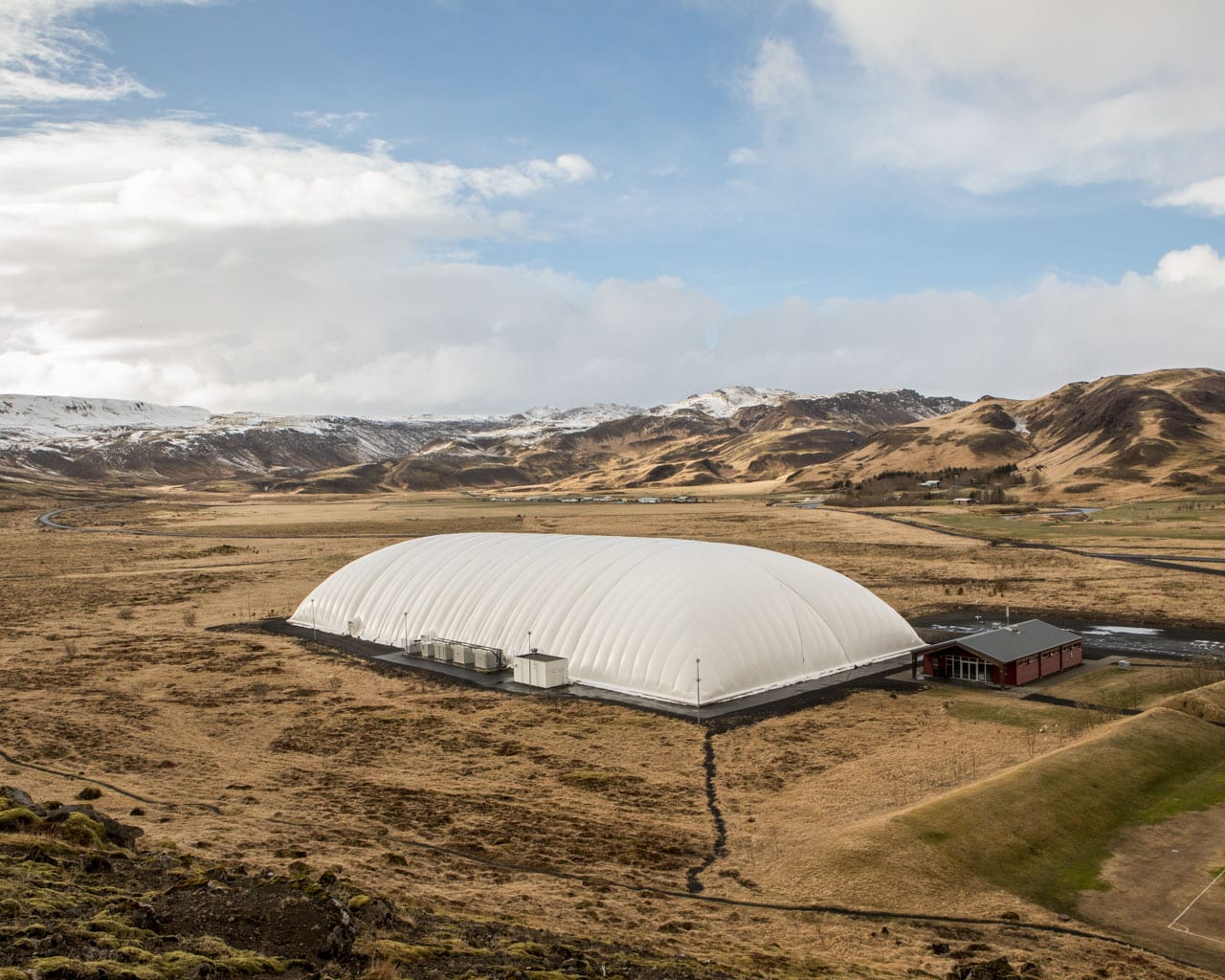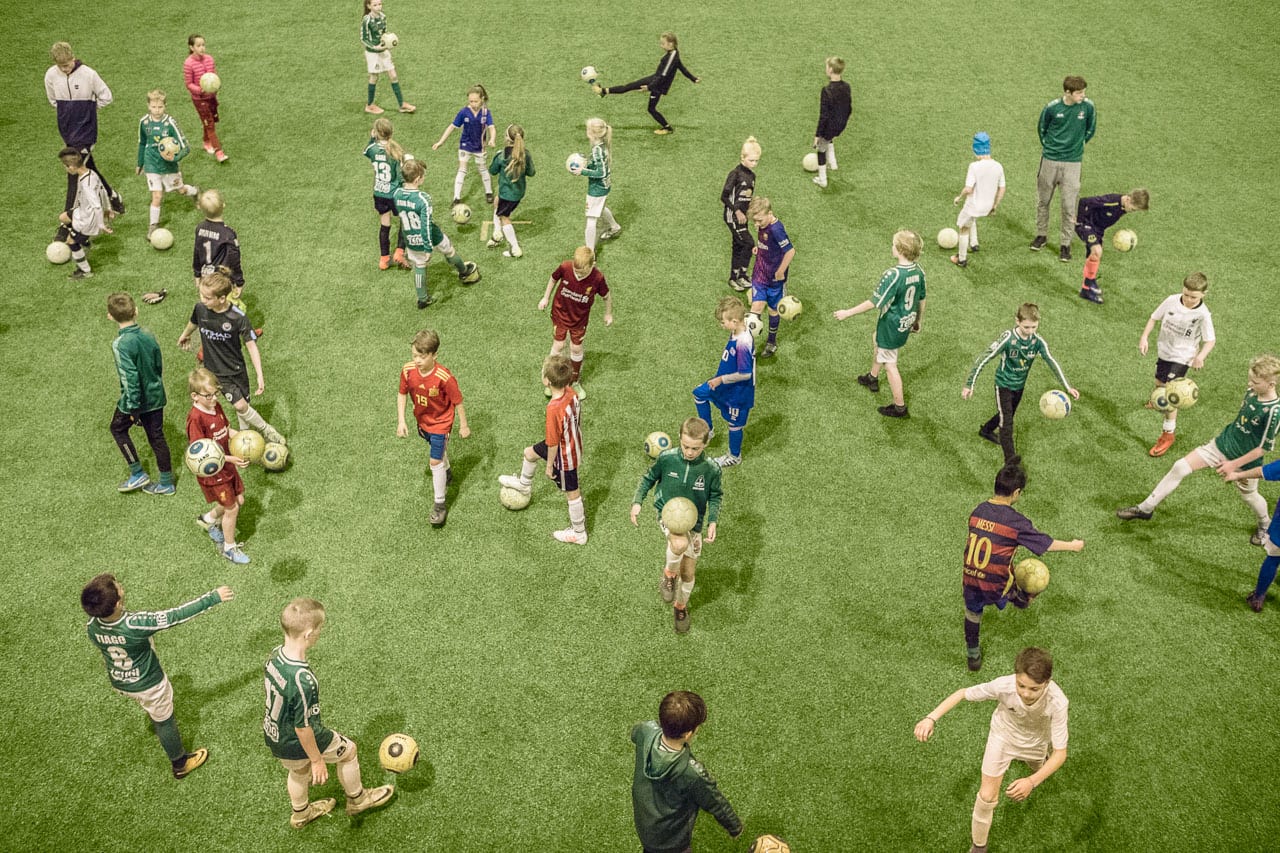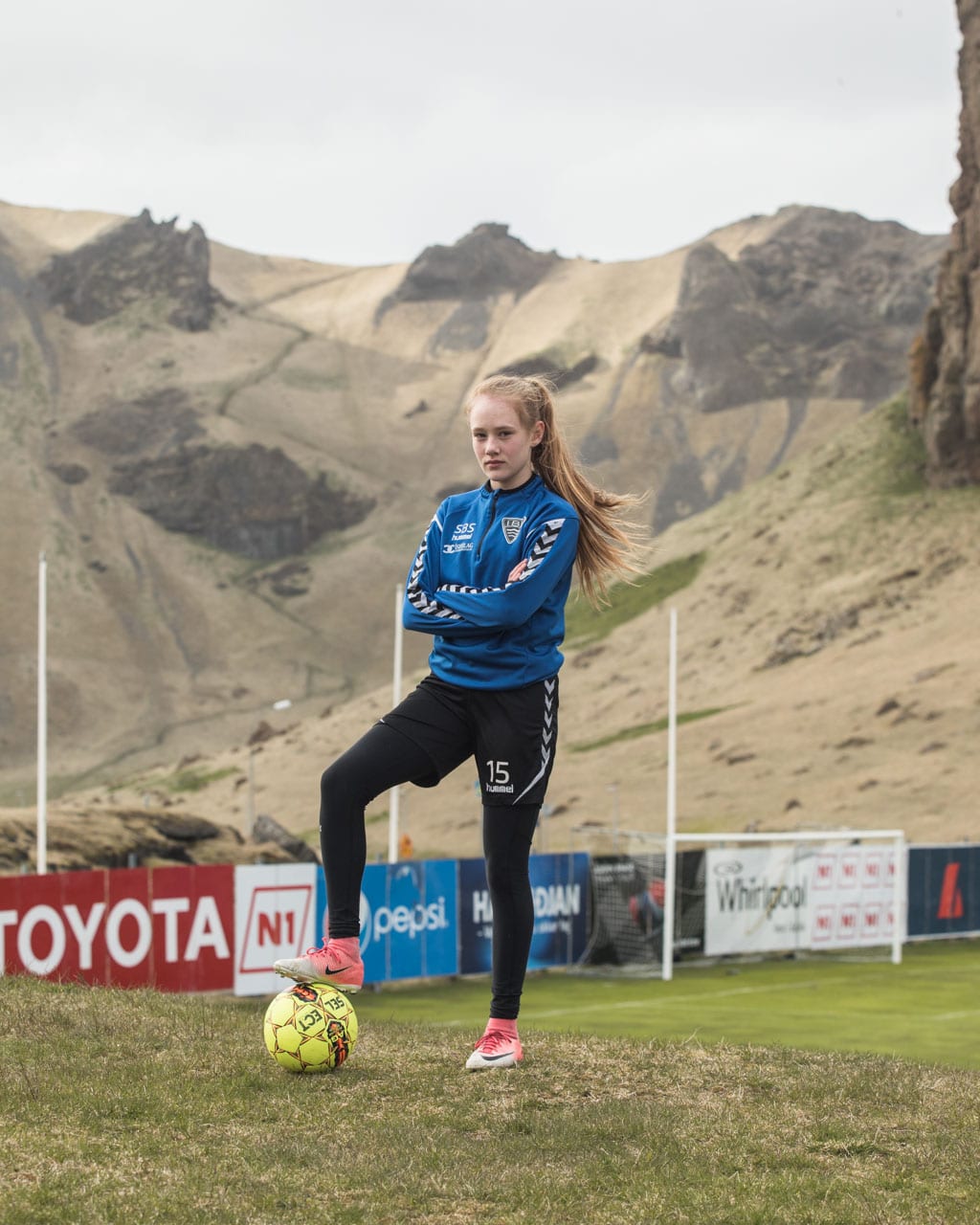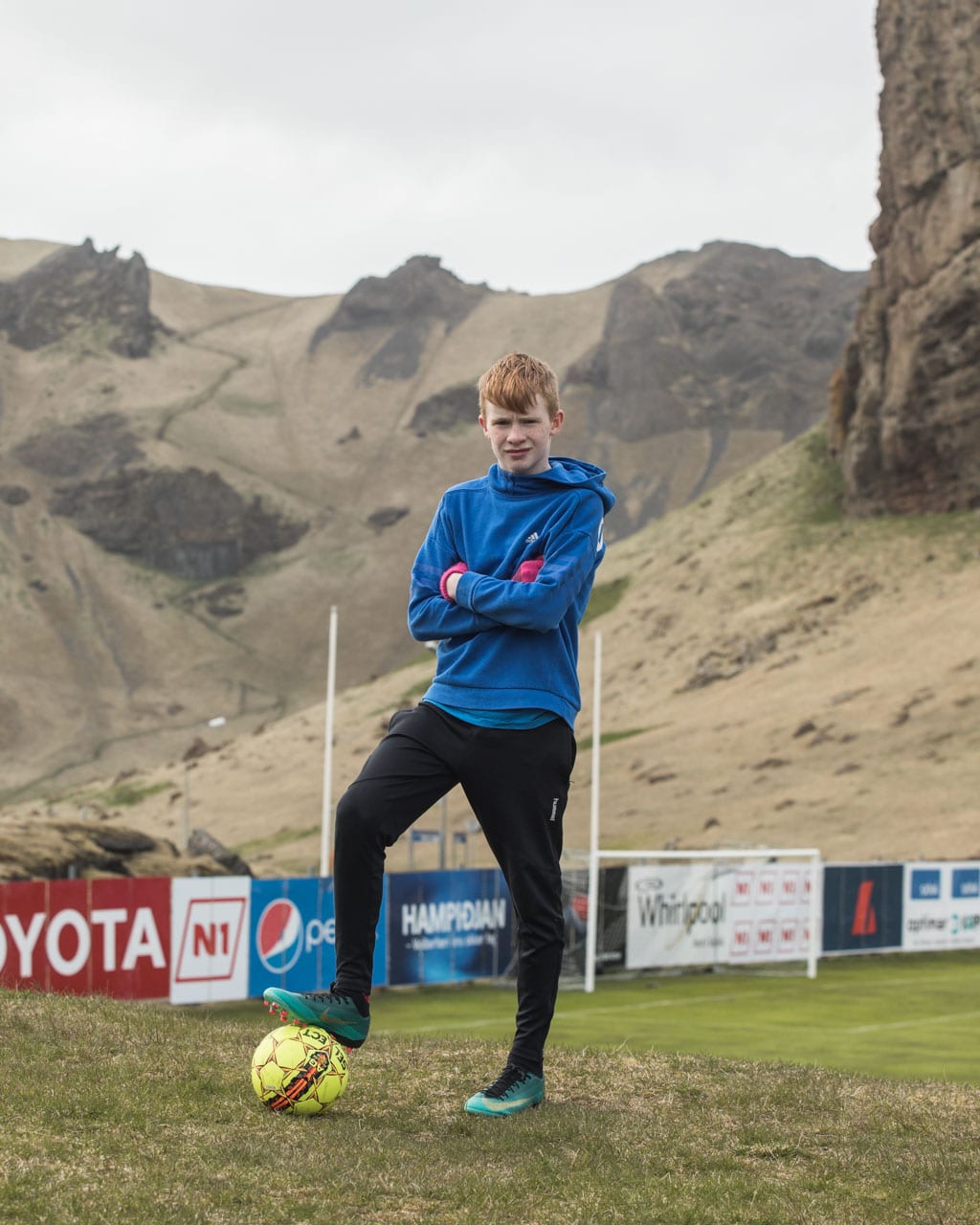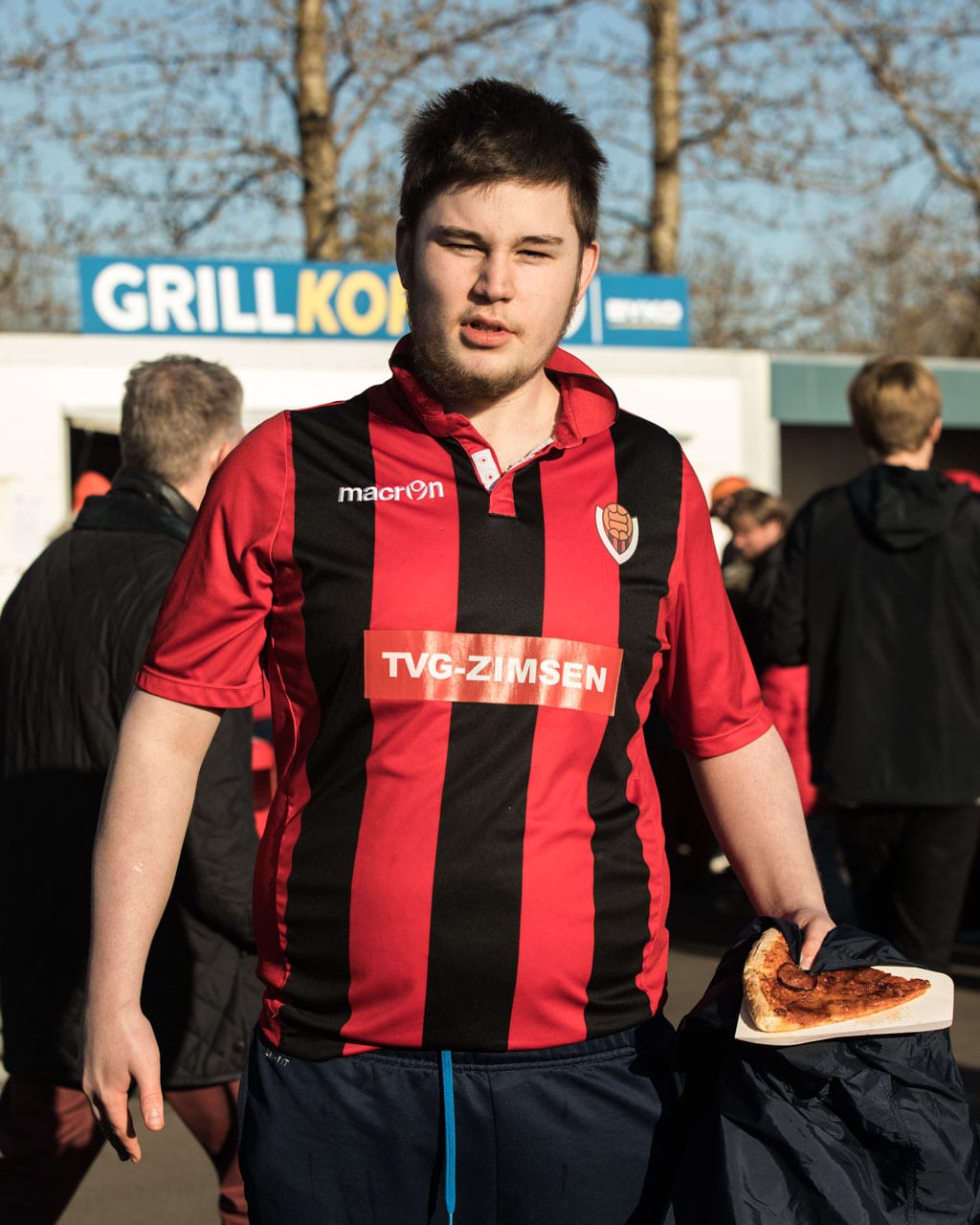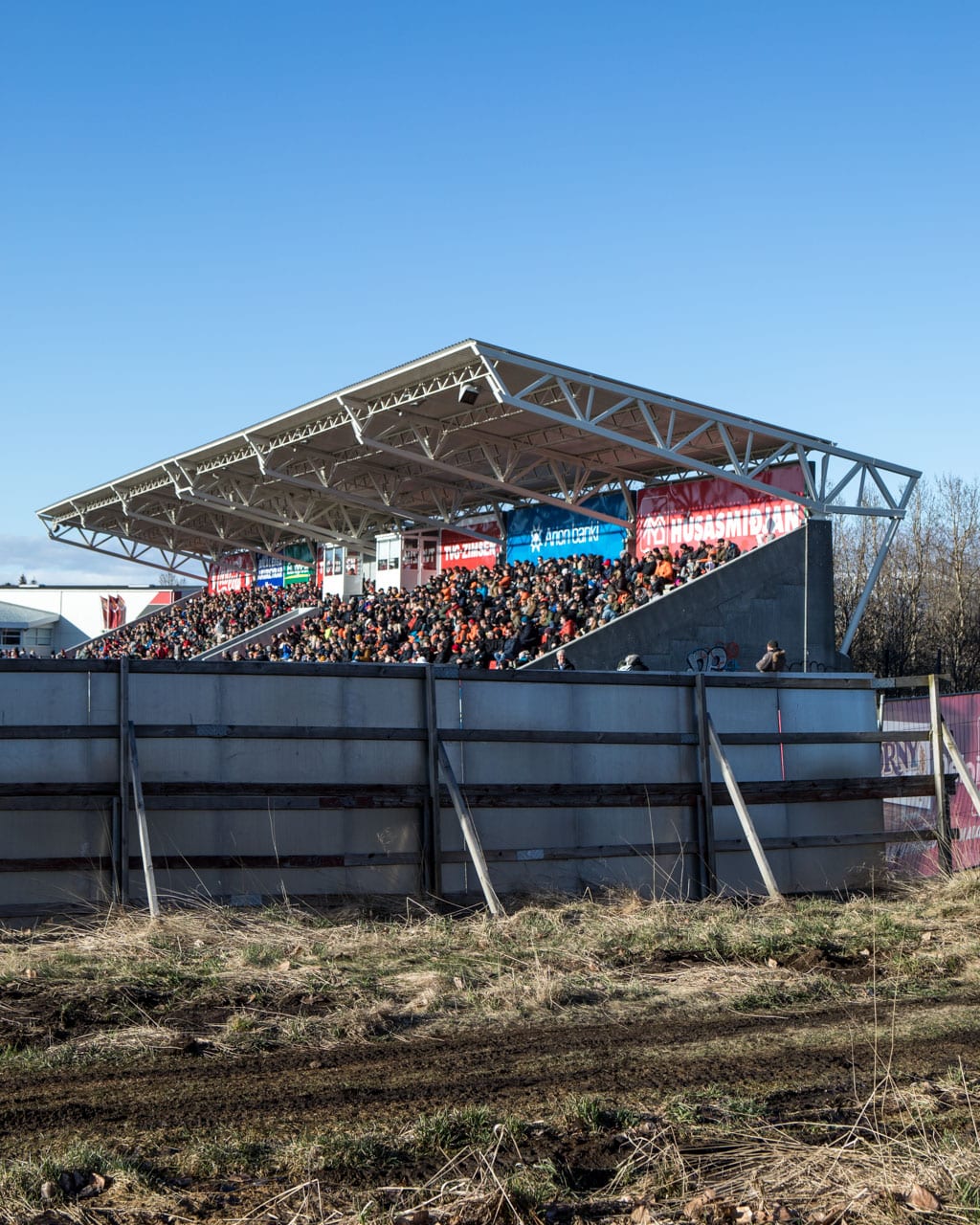For a country with a population of only 340,000 – more or less equal to the London Borough of Ealing – qualifying for this year’s Fifa World Cup was a miracle. It is the smallest-ever country to participate, and in its first match, it managed to hold Argentina to a 1-1 draw. 99.6% of Iceland’s TV viewers tuned in to watch the game, making it the most-viewed sporting event in the country’s history.
“They really are crazy about football,” says Matteo de Mayda, an Italian photographer who travelled to Iceland with journalist Cosimo Bizzarri earlier this year to document the sport in Iceland. “It’s a miracle for them to be at the World Cup, and a miracle to draw against Argentina.”
Icelandic football fans have become known for their dynamic clapping and chanting before matches, a routine they call the “geyser sound”. De Mayda says that while fans are passionate, and thunderously loud, they are not violent, and the country’s football scene is made up of pockets of close-knit communities.
Heimir Hallgrimsson, manager of the national football team, is reported to be so close to his supporters that he meets them for a pre-match pint to discuss tactics and positions. “Everything is really local,” says de Mayda. “It seems like a kinder way to play sport and enjoy football”.
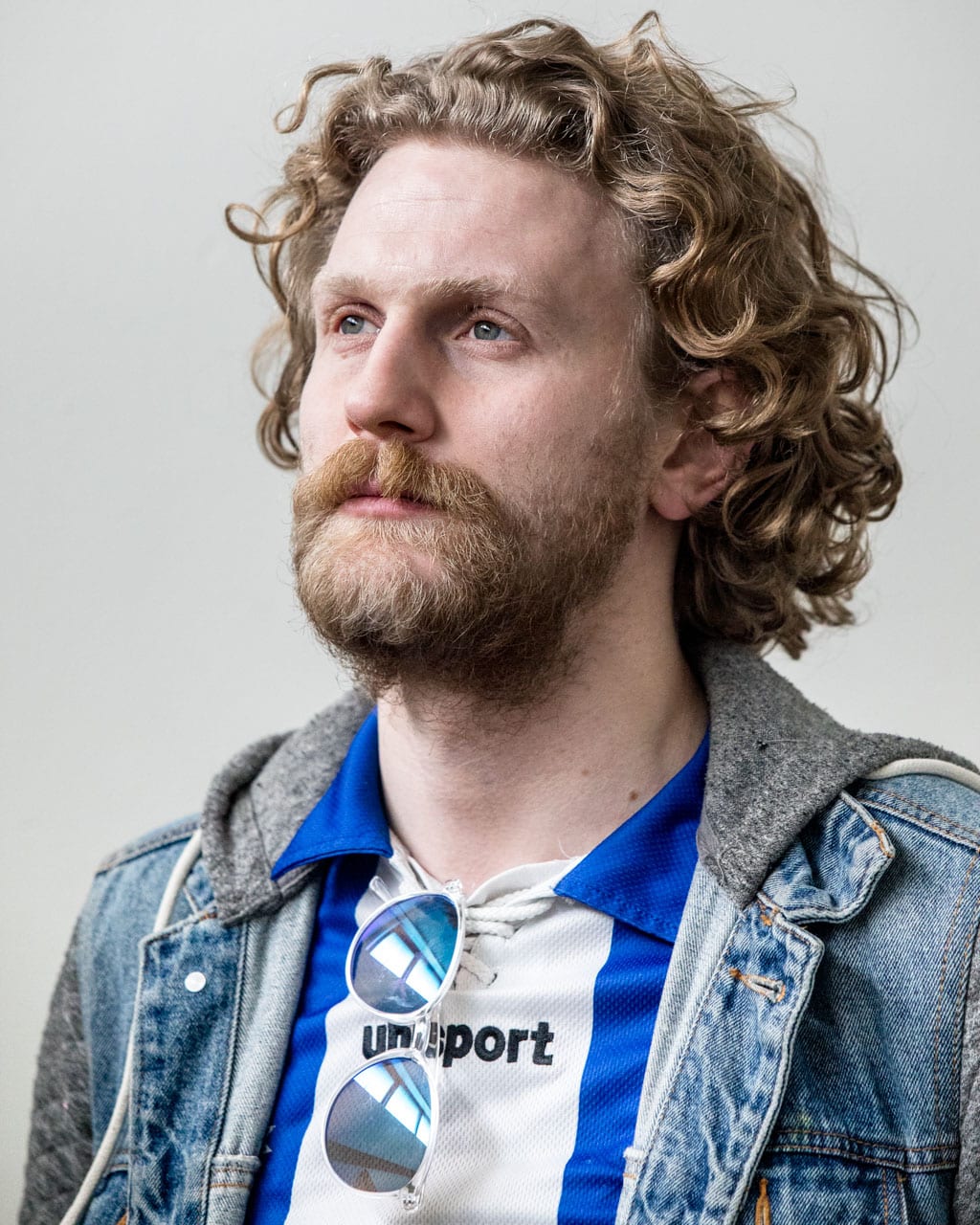
De Mayda has captured Icelandic football from many different angles in his series, which he’s named The first time – from the unusual football fields to the players and the fans. One particularly stunning stadium was situated within a volcano on Heimaey island – an island well-known for nurturing some of the country’s best players, but also for the rocky three-hour boat journey to get to and from the mainland.
“I took the boat, and felt really sick,” says De Mayda, describing the double-knock players face when they lose a match, then have to travel home with feelings of nausea and defeat.
Iceland is also just as invested in women’s football as men’s. The first country to enforce laws on equal pay, on 01 January 2018, it allocates the same coaches and practice hours to women’s football as men’s – and, unlike in the UK, the women’s football matches attract nearly as many supporters as the men’s.
None of this has happened by accident. Over the last 15 years, local authorities have built huge indoor football pitches to combat the cold winter months, and more recently the Football Association of Iceland invested in 150 futsal fields to be built across the country, with the aim of promoting not just the sport, but also general health and community.
Participating in the World Cup can only stoke their enthusiasm further, no matter how far the team goes. The population is thrilled, says de Mayda, and the tournament is “perhaps the largest sport event of their history”.
